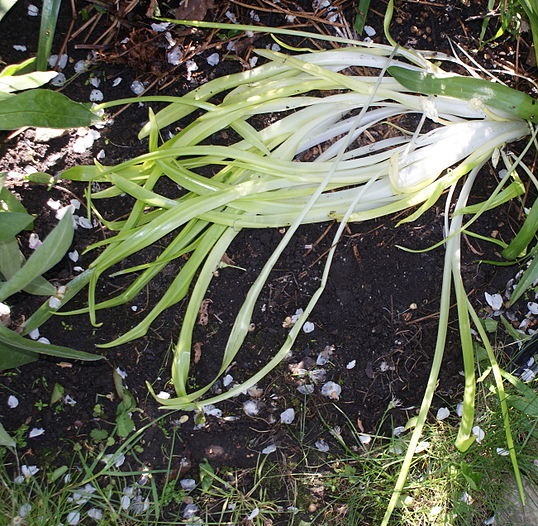4.2.4: Etiolation and Shade Avoidance
- Page ID
- 32001
Learning Objectives
- Contrast etiolated seedlings with those grown in light.
- Describe the adaptive value of etiolation.
Plants grown in the dark have elongated stems, are white or yellow (due to lack of chlorophyll), and have small leaves (Figures \(\PageIndex{1}\) and 2). This phenomenon is called etiolation, and it is a mechanism that increases the chance that the plant will access light.


The prevention of etiolation in Arabidopsis is mediated by phytochrome B. When sunlight (660 nm) converts Pr into Pfr, Pfr moves from the cytoplasm into the nucleus. There it stimulates the activity of DELLA proteins, which bind to and inhibit proteins called PIFs (phytochrome-interacting factors). PIFs are transcription factors that bind to and turn on promoters of genes that, among other effects, stimulate cell and thus stem elongation. DELLA proteins prevent PIFs from binding to the promoters of their target genes, resulting in reduced cell elongation (no etiolation) in the presence of light.
Gibberellins are plant hormones that promote stem elongation thus mimicking the etiolation response. They do this by triggering the degradation of DELLA proteins, which frees PIFS to bind to the promoters of genes needed for cell elongation.
The shade-avoidance response also involves phytochrome and and PIFs. This response helps ensure that the plant accesses enough sunlight to be able to conduct photosynthesis. Natural sunlight contains about the same amount of red (660 nm) as far-red (735 nm) light. However, chlorophyll absorbs 660 nm light strongly, so that the light that filters through a canopy of foliage is enriched in far-red light. This is absorbed by Pfr, converting it into inactive Pr such that PIFs are no longer inhibited. The now-active PIFs turn on the genes needed for auxin synthesis, and auxin stimulates stem elongation.
Attributions
Curated and authored by Melissa Ha using 16.4C: Etiolation from Biology by John. W. Kimball (licensed CC-BY)


